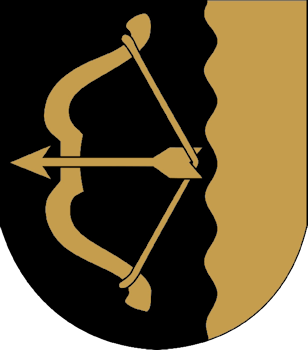Monninsaari Manor
Monninsaari Manor at the heart of Savonranta’s history
It’s hard to talk about Savonranta without mentioning Monninsaari Manor, a central part of Savonranta’s history and closely associated with the lives of many of its residents. The rich and lively history of the manor house is undoubtedly the most colorful page in the history of the municipality.

The money on his back
The actual age of the manor can only be guessed at. All that is known is that the mansion was used as a military headquarters during the Russian occupation. The history of the mansion, which is of great importance to the inhabitants of Savonranta, begins in 1894, when Pekka Kansanen, the most prominent businessman in the north of Savo, arrived in Savonranta from his hometown of Leppävirra to attend the bankruptcy auction of the Tschusoff & Sapetoff from the city of Veszprém.
The auction of Pekka Kansanen was important because in addition to the mansion and a plot of more than two thousand hectares, it also included a sawmill and a mill. It is also remarkable that Pekka Kansanen paid cash for his auction. He took the money from a firewood container on his back.
The Vuokala sawmill, which was closely associated with the Monninsaari estate, has had an important place in the economy and development of economic life in Savonranta. Around the sawmill, Vuokala developed into the municipality’s largest village in the 19th century. At its largest, the sawmill’s fleet consisted of twenty ships, sixteen of which were steam-powered.
The ships transported timber from Savonranta through the Saimaa Canal to world markets at a time when Savonranta had no road. Huge quantities of firewood were transported to St. Petersburg, among other places. Old records show that the Salama, now a museum ship, was carrying 400 sacks of rye flour for the Monninsaari estate when it sank on Lake Saimaa in 1898.
Vuokala’s mill, which was purchased with the purchase of the mansion, grinded up to 20,000 kilograms of its own grain per week. In addition, wheat from the parish was ground. In 1913, a power station was built near the mill, which supplied the houses in the church village of Savonranta with electricity.
The mill houses the handicraft and souvenir shop of the Savonranta craftsmen’s association. The mill also serves as a mill museum.
A pioneer in agriculture and tourism
Monninsaari Manor also had a wide range of business activities related to agriculture. Among the landlords, Jaakko Kansanen, who studied agriculture in Denmark, was interested in agriculture and horses. He was responsible for the dam system that drained the fields around the mansion. The latest machines and equipment to hit the market were first introduced in Savonranta at Monninsaari Manor.
Jaakko Kansanen’s son, Ukko-Pekka Kansanen, on the other hand, was a businessman credited with developing the tourism industry in the locality. Ukko-Pekka and Olga Kansanen founded the first Iomakylä in Savonranta in 1967. Kääpäsaari Iomakylä had a beautiful location and encouraged the local people to establish other Iomakyläs.
The Kansanen’s also founded the restaurant Koskikara in the early 1970s.
The restaurant’s popularity was at its peak in the 1970s, when lines out the door could be very long. Central and Southern European orchestras played live music in the restaurant.
Ukko-Pekka Kansanen’s other businesses included a brick and tile factory in Tiiliniemiye, a quarry and a horseshoe factory.
In order not to fall, the horses had swamp shoes in soft fields. The company sold these special swamp shoes in the market and also all the way to Rovaniemi.
It was not easy to raise livestock in the urban area, so it was better to earn a living from resources other than livestock. They focused on tourism.
The mansion was renovated to serve as accommodation for tourists.
The current owner, Sirpa Nordqvist, has received a subsidy for the renovation and preservation of the old. buildings.

